NCSO SEPTEMBER & october 2022 newsletter



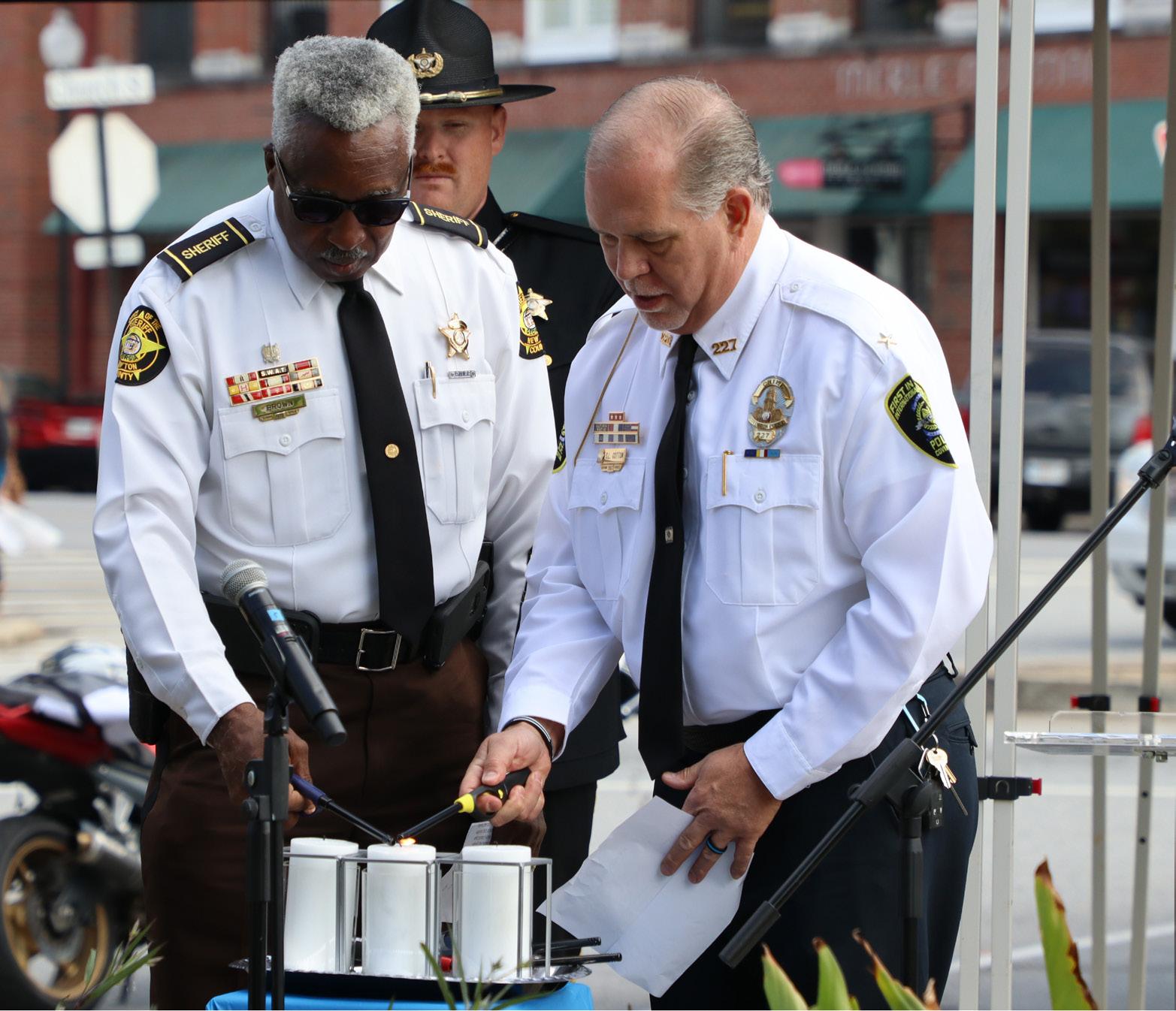









This month, I want to focus on an important subject that I think is of significance from a law enforcement perspec tive: The importance of women in policing. September 12th of each year is recognized as National Police Wom en’s Day in America.
First, it should be noted that the presence of women in policing in the United States falls well behind that of comparable countries. For example, Canada, Australia, and the United Kingdom all have nearly twice the number of policewomen than the United States.
In the United States, only 13.3% of full-time law en forcement officers are female, while 86.7% of law en forcement officers are male. There is more than 3,685 chiefs of police currently employed in the United States. 8.3% of all chiefs of police are women, while 91.7% are men. 35.3% of sheriffs are women and 64.7% of sheriffs are men. 17.3% of detectives are women and 82.7% of detectives are men. This underrepresentation of women in policing has significant public safety implications.
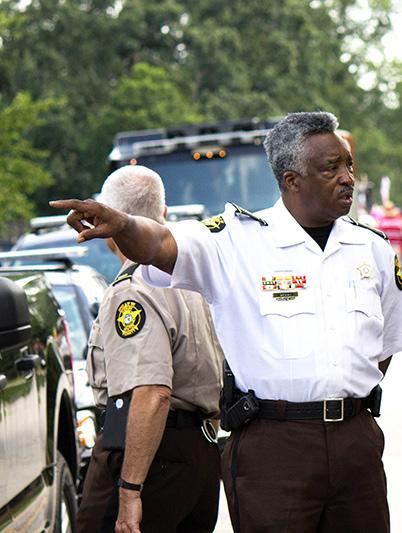
It should be noted that women in the United States entered the criminal justice professions in the early 1800s. During that period, they were primarily employed as prison matrons. Their principal responsibilities involved preserving the safety of incarcerated women and children. In the 1850s, for example, the city of New York employed police matrons to protect and search female inmates; however, that was the extent of their duties, and they possessed no authority whatsoever from a law enforce ment perspective. Many of the women became involved in social and moral reform movements in the late 1880s and early 1900s, which facilitated their visibility in the field of policing and public vigilance. These moral reform movements concerned themselves with eradicating gam bling, prostitution, public obscenity, alcoholism, and other behaviors they deemed vices.
For those of you who might be unaware, Marie Owens is believed to be the first professional police woman in the United States. She joined the Chicago Police Department in 1891.
Other early female police officers include Alice Stebbins Wells, who was commissioned as an officer in Los Ange les, California in1910, and Lola Baldwin, a policewom an who was employed with the City of Portland Police Department, addressing women and children’s issues. She officially began her employment in 1908. The police
women that followed Marie Owens, Stebbins Wells, and Lola Baldwin in the 1920s, 1930s, 1940s and onward, fit a particular profile. They were often middle or upper-class women, who received their inspiration in moral reform and counseling movements.
These movements often served as advocates for the inclusion of women in the police profession, as well as organizations such as the Federation of Women’s Clubs, The League of Women Voters, and the National Women’s Christian Temperance Union. Supporting the inclusion and growth of women in the police force aligned with the mission of these organizations, many of which sought to expand women’s roles in civic and public life. In 1915, the creation of the International Association of Policewomen occurred, which advocated for additional opportunities for women in policing.
The history of women in law enforcement has continued to progress over the past century. Often fighting against discrimination and oppression, women now play a signif icant role in police organizations throughout the United States and other locations in the world. Though the num ber of women in policing in the United States has grown from 3% in the 1970s to at least 13% in recent years, there continues to be quite a way to go for gender equality.
You might be asking, why are women so important to the law enforcement profession? The answer is, women are consistently rated as trusted by their communities and, more importantly, they are motivated to serve commu nities in an era of decreased police legitimacy. Research reveals that women possess high levels of interpersonal communication skills, which translates into more effective practices in the field. Women are found to have a calming effect on male partners in high-stress and dangerous as signments, resulting in fewer police deaths. Higher levels of female representation are associated with organizations that emphasize community policing. Female police of ficers possess a positive influence on the perceived job performance, trustworthiness, and fairness of a law en forcement agency, perhaps increasing the public’s will ingness to cooperate in the production of positive public safety outcomes.
Female officers are less likely to use force, use excessive force, or be named in lawsuits than male officers.
Research has revealed that male officers are more likely than female officers to be aggressive as a result of some



quality of the encountered members of the public, such as race or socio-economic class.
Why are women police officers less likely to use force?
First of all, female law enforcement officers are more likely to utilize de-escalation tactics in tense situations, both because they can be more effective, but also because women can sometimes be at a physical disadvantage when engaging with a suspect.


Even though studies reveal that individuals use identical amounts of force against female officers as they do against male officers, and in some cases, more force, female offi cers are more successful in defusing violent or aggressive behavior.
Meta-analyses have confirmed that male officers are significantly more likely than female officers to engage in police misconduct. Studies have consistently found that women possess several traits that make them trusted part ners to their communities, ultimately helping to improve police-community relations.
Fortunately, the days of low-paying work as a prison matron have long departed; however, there continues be significant room for improvement. The job as a police of ficer is not for everyone. He or she must be both mentally and physically tough to make it in this profession.
I want to close this message with a familiar quote: “All women are created equal, but only the finest become po lice officers.” Thank you for your dedicated service to the Newton County Sheriff’s Office.
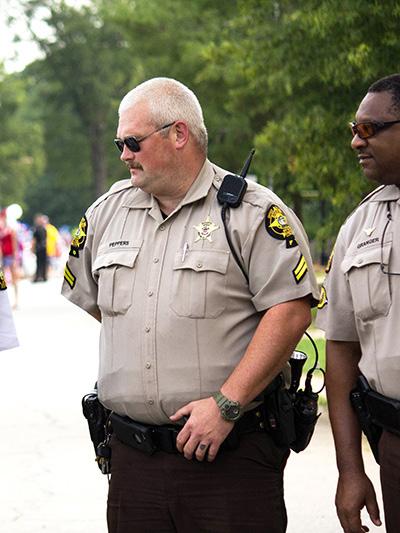 Sheriff Ezell Brown Newton County, Georgia
Sheriff Ezell Brown Newton County, Georgia
The goal of the Newton County Sheriff’s Office is “to be recognized as the kind of professional organization that values, respects, and honors the rights and dignity of the entire community. Through an abundance of collaborative efforts, the NCSO is committed to improving life in every aspect for its citizens, businesses, schools, colleges/universities and visitors.” The Newton County Sheriff's Office is located at 15151 Alcovy Road in Covington, Georgia. From I-20, take Exit 92 onto Alcovy Road and travel north on Alcovy Road for approximately one mile and cross over Highway 142. The Sheriff's Office will be on the left.


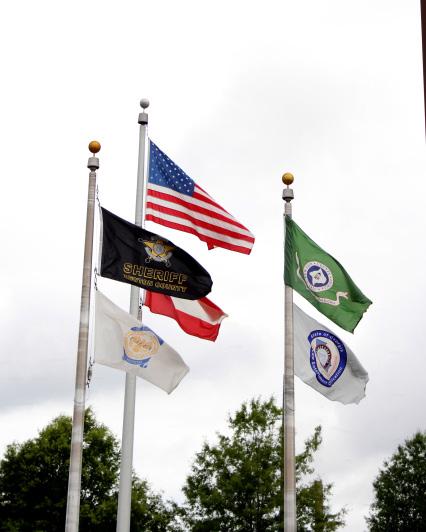
Support Services acts as the sup porting arm for the Newton County Sheriff’s Office. Personnel as signed to Support Services provide to the needs of all employees and inmates.
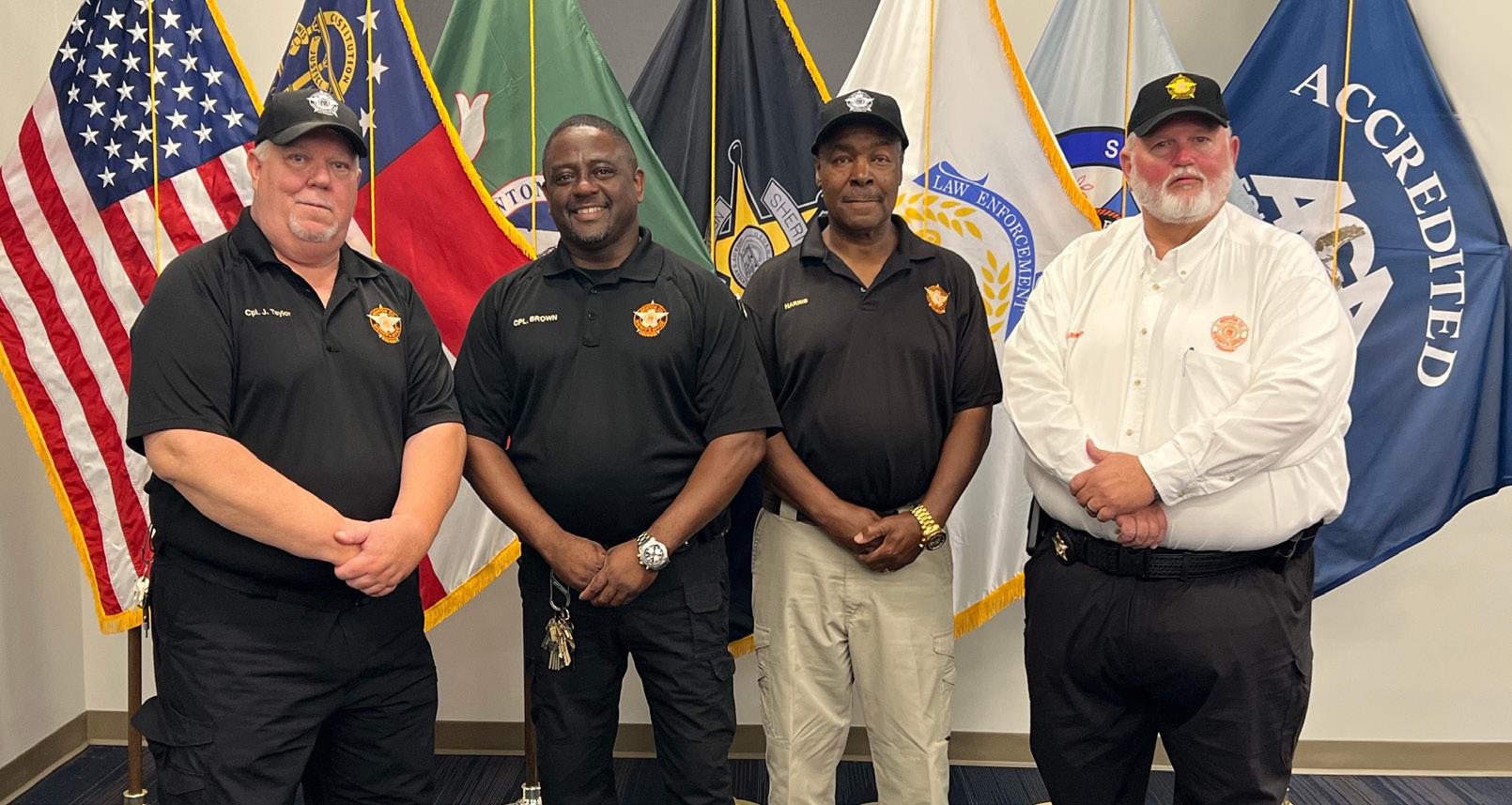

Support Services manages the operation and security of shipping and receiving services and outside maintenance; oversees the safety and securty of inmate workers; and many other duties assigned by the Sheriff.
The Domestic Violence Unit reviews every family violence report that is taken by the Newton County Sheriff’s Office. Often times responding Dep uty Sheriffs are unable to take charges because of a lack of probable cause at the time of report. By reviewing these reports, it will allow the agency to explore ways of developing probable cause and prosecuting more family violence/domestic abuse cases here in Newton County.
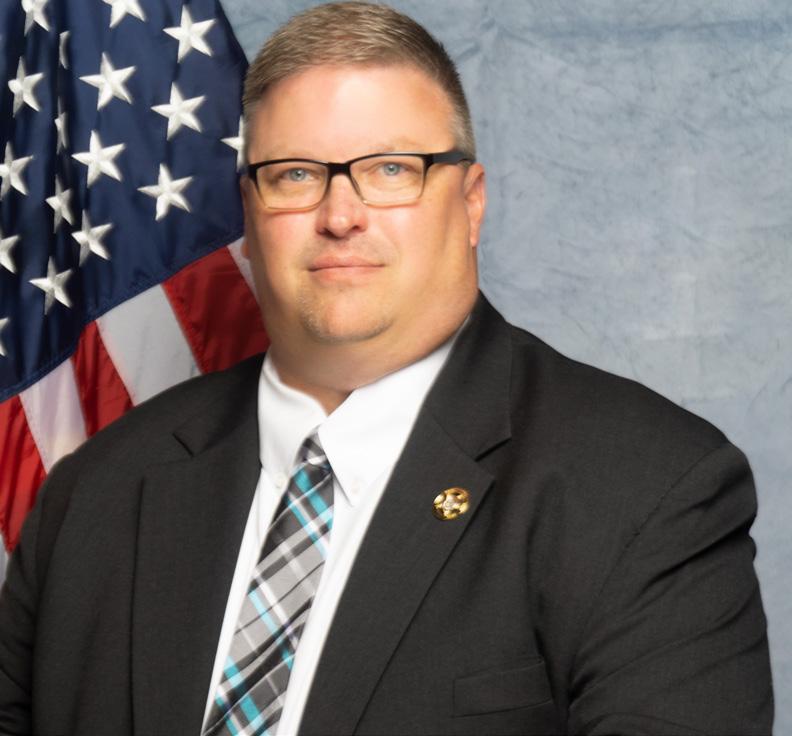
The Domestic Violence Unit will also stay in touch with the victims of these cases, making sure that the perpetrators abide by the conditions of their bond and/or Temporary Protective Orders (TPO), if either applies.
SGT. WADE FREEMAN DOMESTIC VIOLENCE UNIT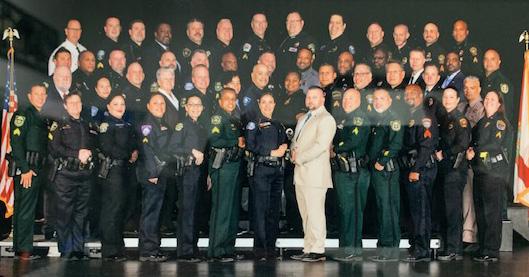
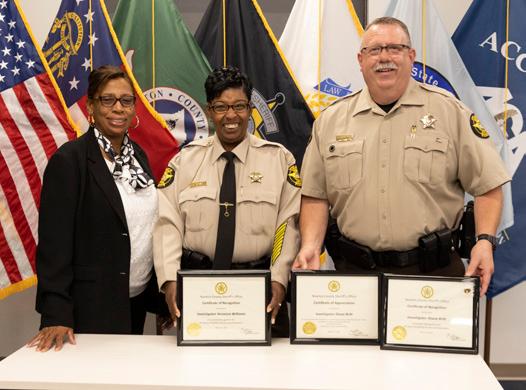
Deputy Hang Tran
Deputy Shamira Kitchens
Deputy Lorenza Williams
Gerald Castillo, Jr.
Irvin Hawkins, Jr.
Ashley Payne
Sharima Bali
Caitlin Jett
Deputy Carlos Rhodes
Deputy Andrew Archie
Deputy Michael Gregg
Deputy Derreck Bartlett
Deputy America James Cpl. Avery Williams
Arthur Holmes
Melvin Chambers Kearia Dorsey
Brenda Sloan
Investigator Charles Ammons
Deputy Ezekiel Walker
Deputy Odalis Alberto
TEN YEAR
Bradrick Hill
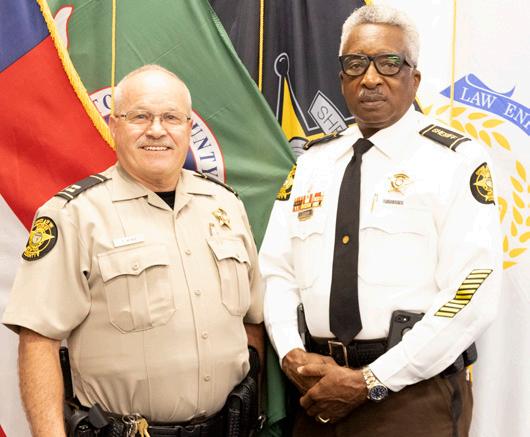
Deputy Jeffrey Maben Cpl. Romario Johnson
FIFTEEN YEAR
Litasha Williams
Sandra Mangham Gladys Kraudy
Cpl. Ary Grijalva Larry Harris Jerry Taylor
Deputy Sherri Collier Deputy Lee Smith
Deputy Kelly Singley
Investigator Shane Britt
Capt. Tom Kunz
Investigator Veronia Williams THIRTY-FIVE YEAR
Lt. Ken Ridling
Capt. Marty Roberts
Investigator Veronica Williams
Investigator Veronica Williams Investigator Shane Britt
Deputy Joseph McClarin
ROOKIE OF THE YEAR
Deputy Dustin Wooten

Cpl. Jathan Nagrodski
Deputy John Restivo Cpl. Brent Morrison Kierra Bell
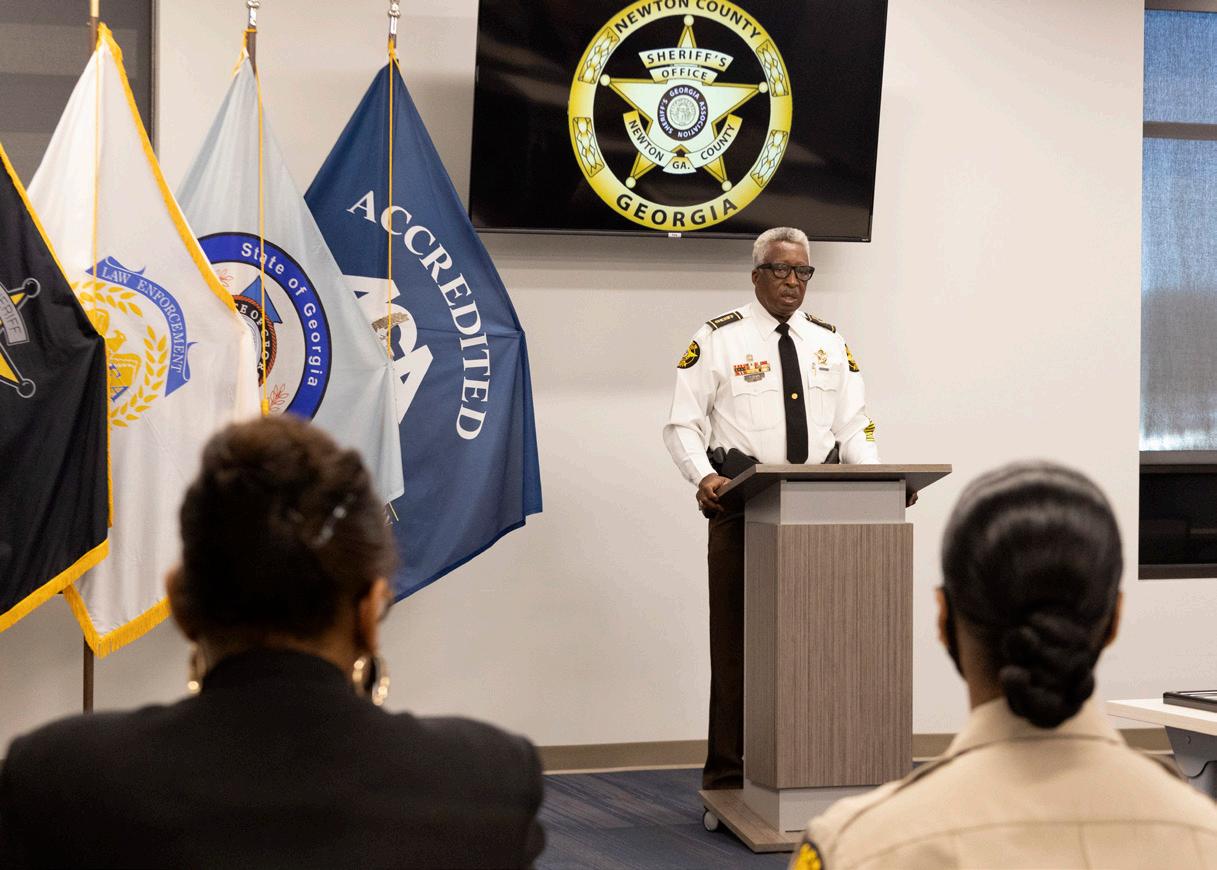

Sgt. Tony Howard
In March, Lt. Michael Cunningham completed the Commander Officers Development Course (CODC), a 400-hour flagship education program for law enforcement officials in mid to upper-level management.
CODC provides law enforcement officials with a solid foundation for practical law enforcement administration and a comprehensive overview of management practices. A few of the topics and areas of study provided by the course are as follows: Evolution of Policing, Policing in the 21st Century, Organizing Police, Strategic Manage ment & Teambuilding, Interpersonal Communication, Ethics & Innovations, Organizational Communications, Emotional Leadership, Leadership Challenges, Budgeting: Doing Your Part, and Administrative Law Affecting Law Enforcement.
Uniform Patrol Division: Cpl. Jathan Nagrodski Support Services Unit: Larry Harris
Criminal Investigation Division: Investigator Joshua Hicks Detention Division: Wendy Few
Court Services Division: Deputy Tremelle Riley and K-9 Tom-Tom Special Investigations Division: Cpl. Brent Morrison
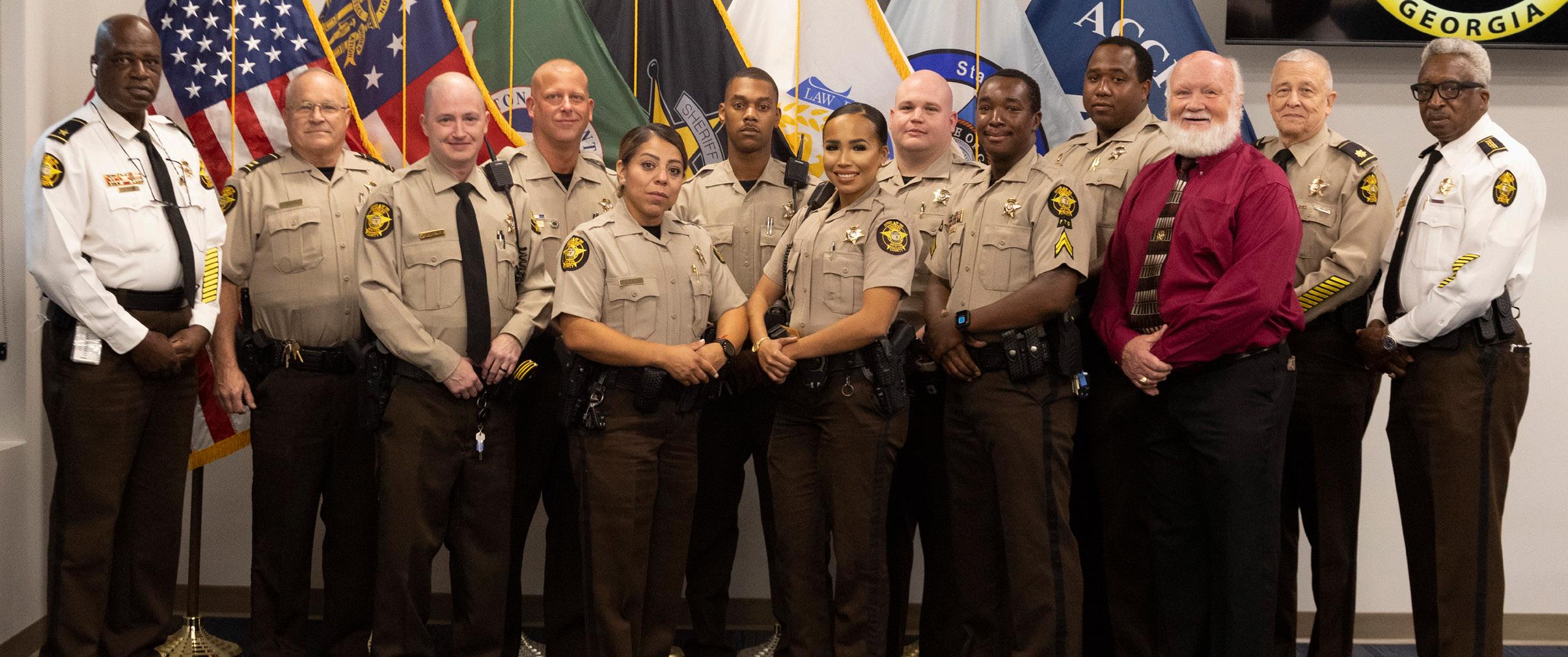
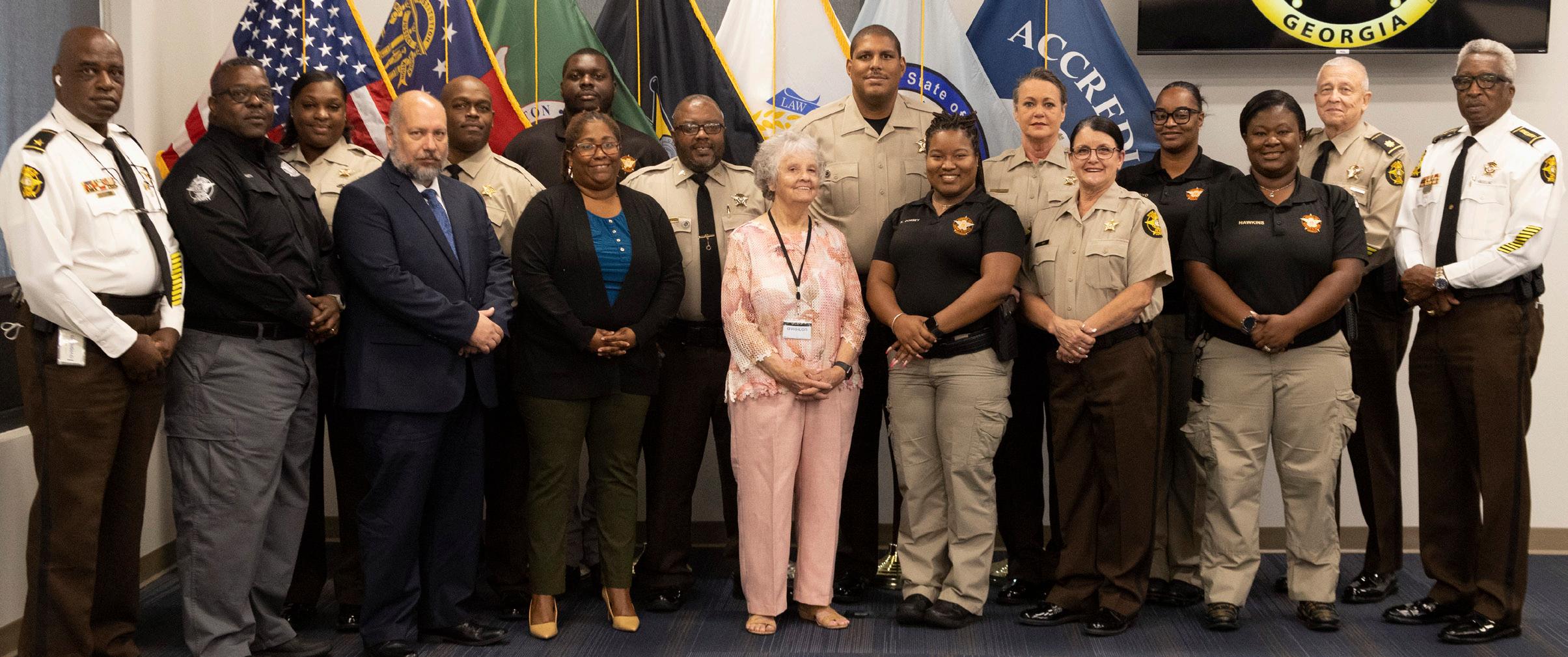
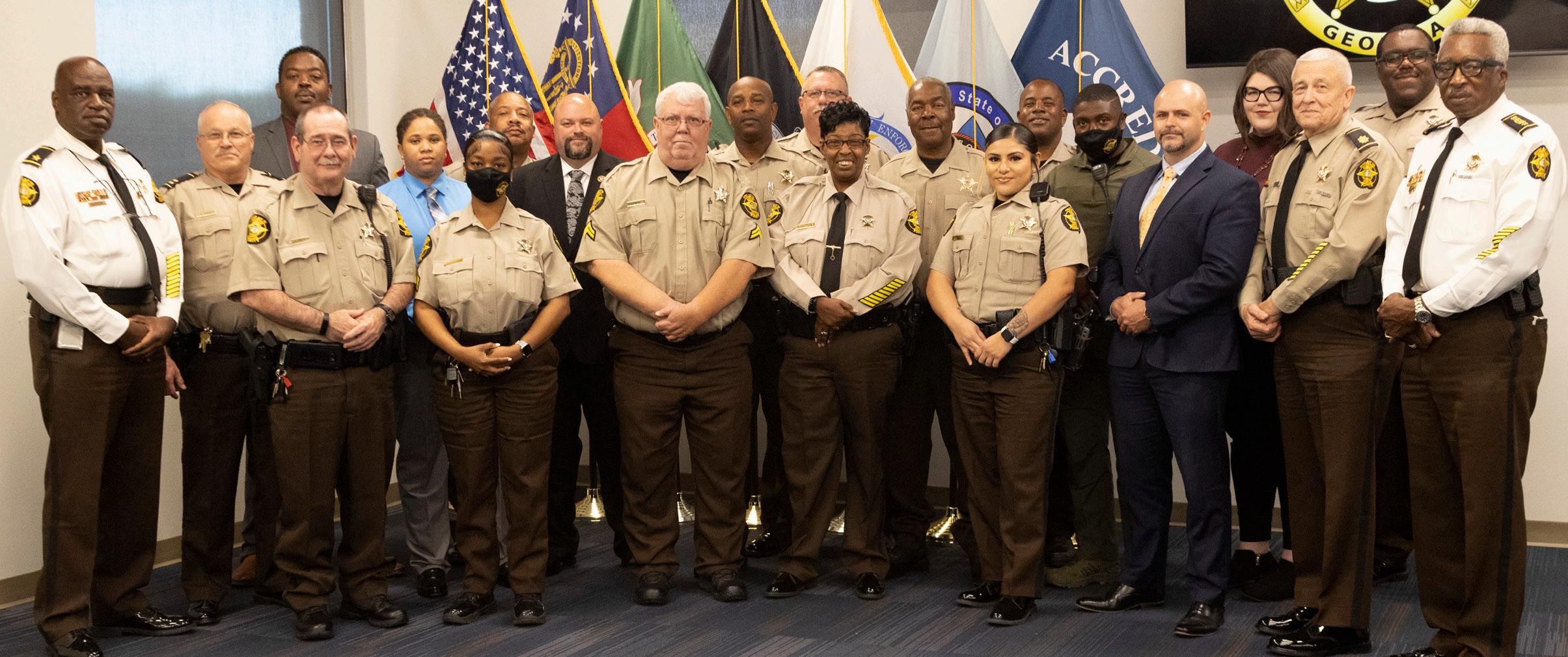
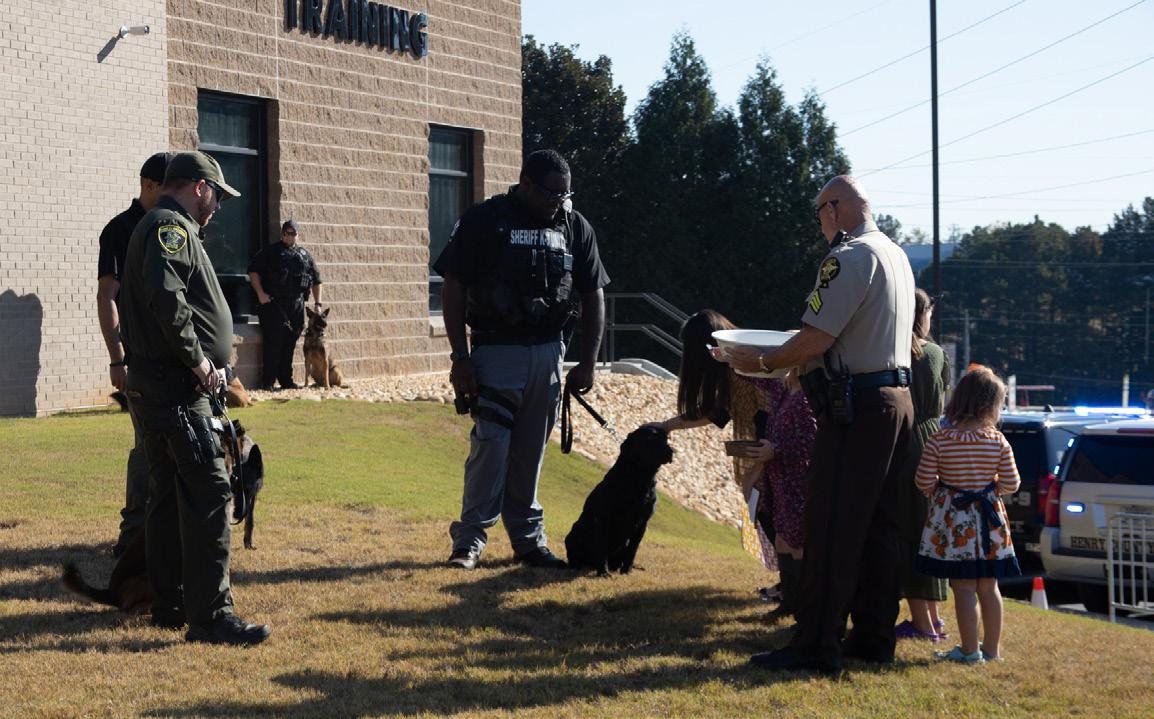
From October 7th through October 9th, Sheriff Ezell Brown and the Newton County Sheriff’s Office, in contin ual partnership with local municipalities and places of wor ship, participated in the National Faith and Blue Weekend. National Faith and Blue is an initiative that builds bridges between communities through activities jointly hosted by places of worship and law enforcement agencies.
The NCSO partnered with Reverend Neeley Lane of the First Presbyterian Church, Covington, GA to host the 3rd Annual K-9 Blessing on October 7th at the NCSO Head quarters. More than 10 agencies participated in this year’s K-9 Blessing. Following the K-9 Blessing, Sheriff Brown hosted the Community First Responders Luncheon, where first responders and the community came together for great food, fellowship, and the community.
The NCSO partnered with Pastors Darryl and Kristen Hooper of The Church Covington, Kale Waddleton, and Rob Ward to host the 2nd Annual Faith and Blue Car Show on October 8th at The Church Covington. More than 70 cars, along with a few bikes, participated in this year’s show. Sheriff Brown awarded trophies for the follow ing classes: Best Police, Top 20, Best Late Model, Best 4-Wheel Drive, Best 3-Wheel, Best Motorcycle, and Best of Show.
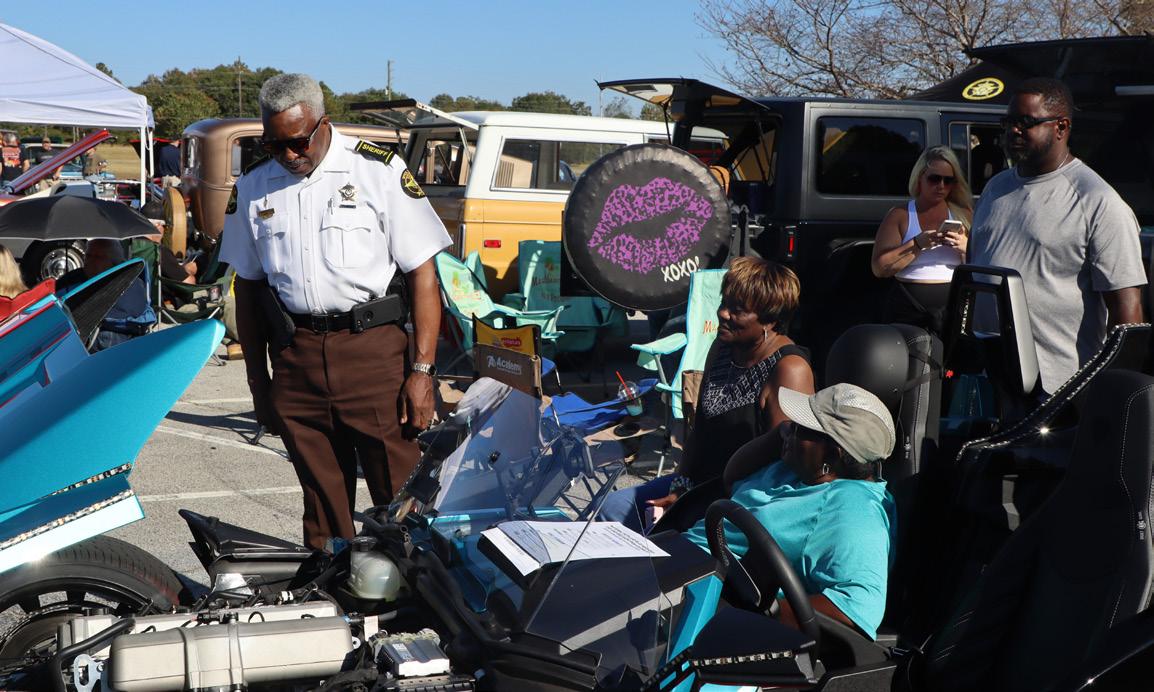
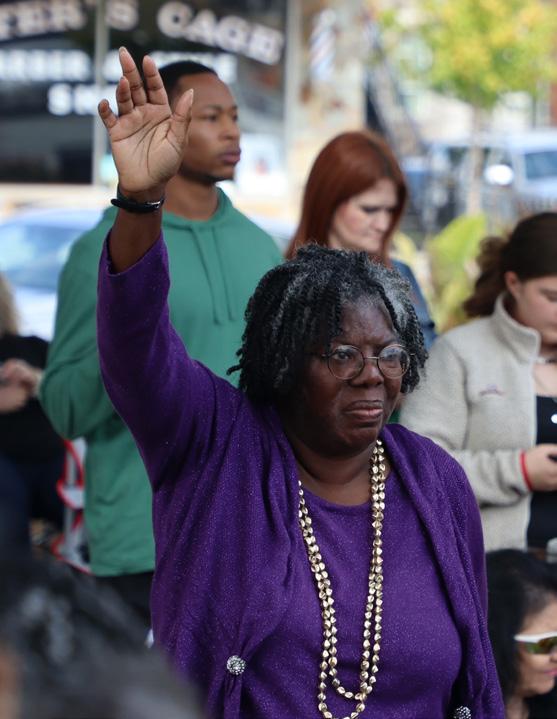
Additionally, on October 8th, the NCSO partnered with The Council on Alcohol and Drugs, Inc. for the It’s Fall, Y’all Community Festival at Denny Dobbs Park. The festi val, which was open to the public, provided food, entertain ment, and live music.
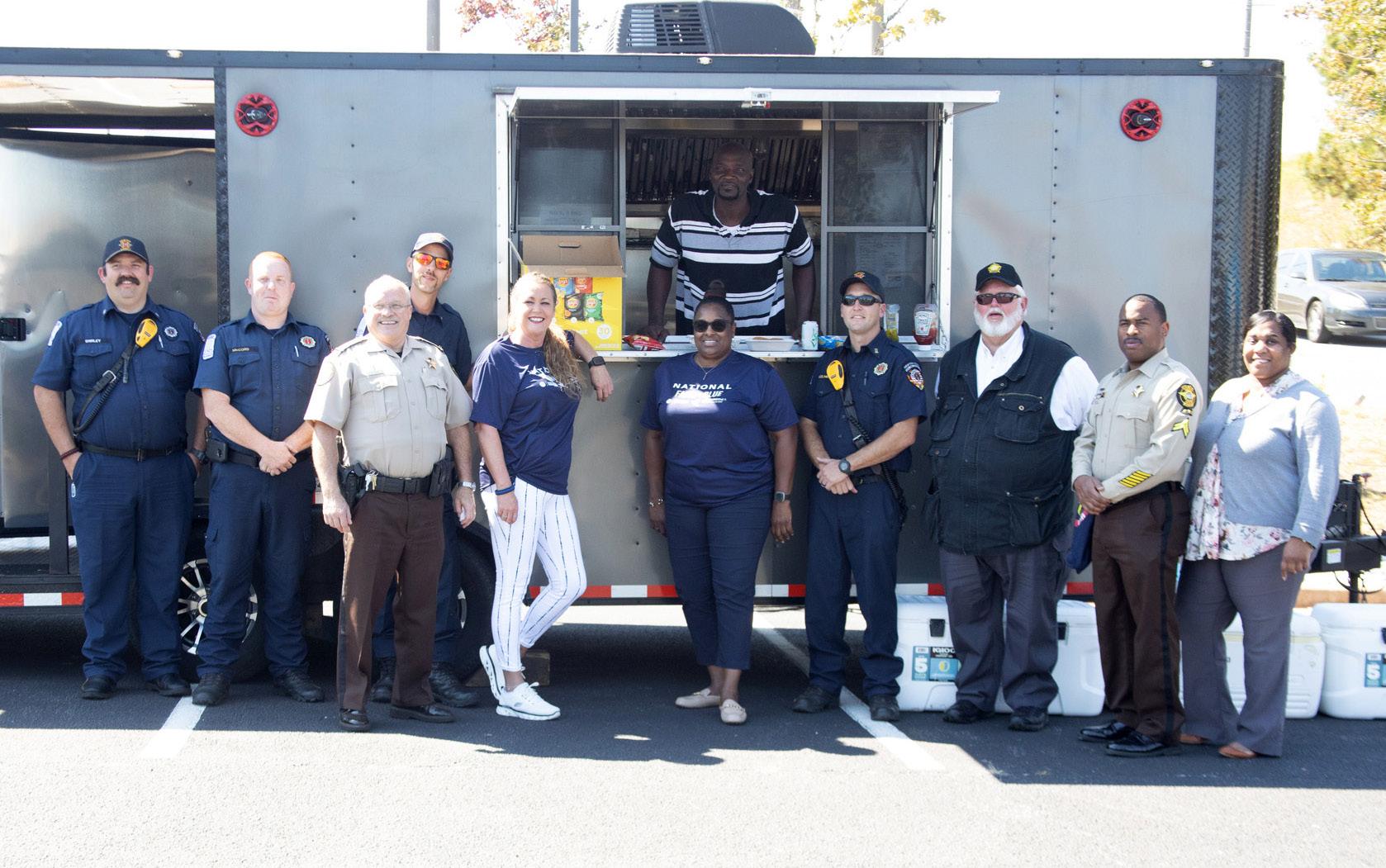
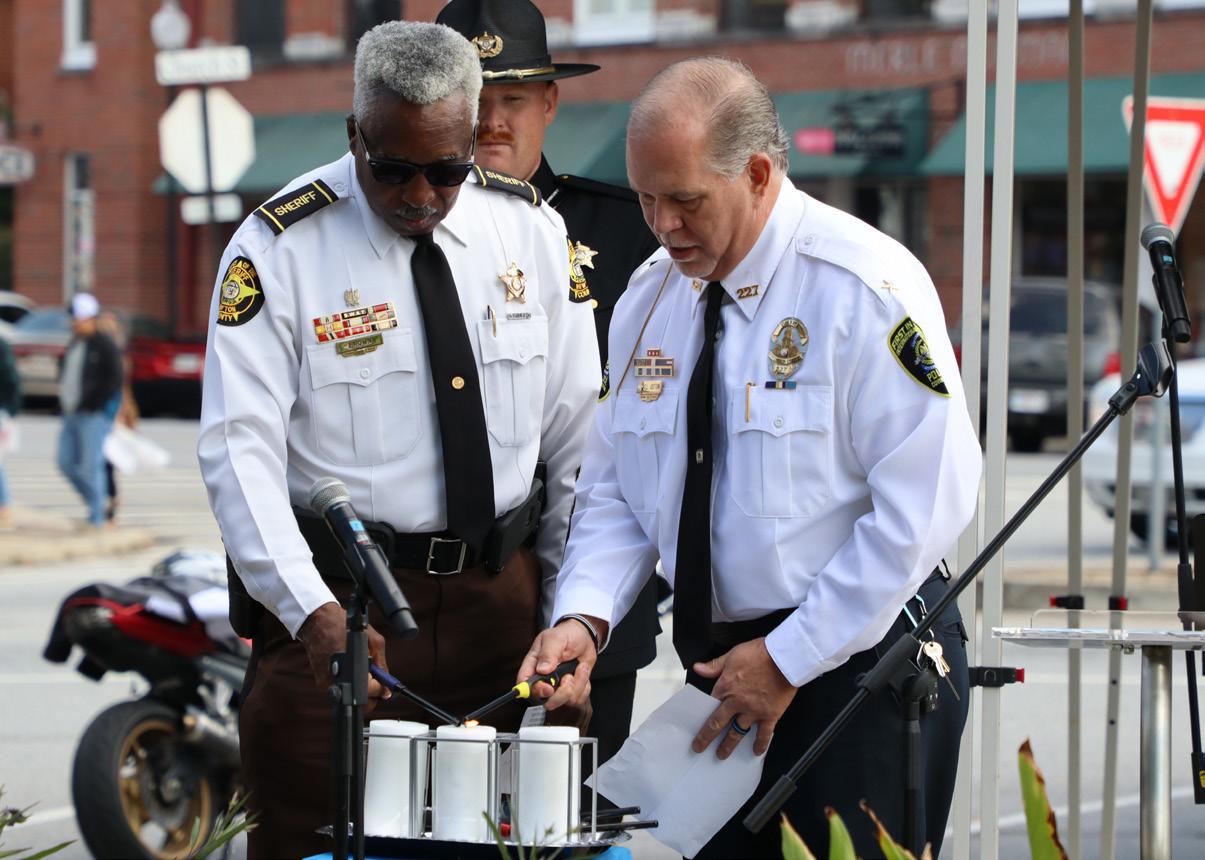
To conclude National Faith and Blue Weekend, the NCSO partnered with the Covington Police Department and Pastor Justic Adams of New Life Praise Center to host the 2nd Annual Corporate Prayer, which was held on Cov ington’s Historic Square.
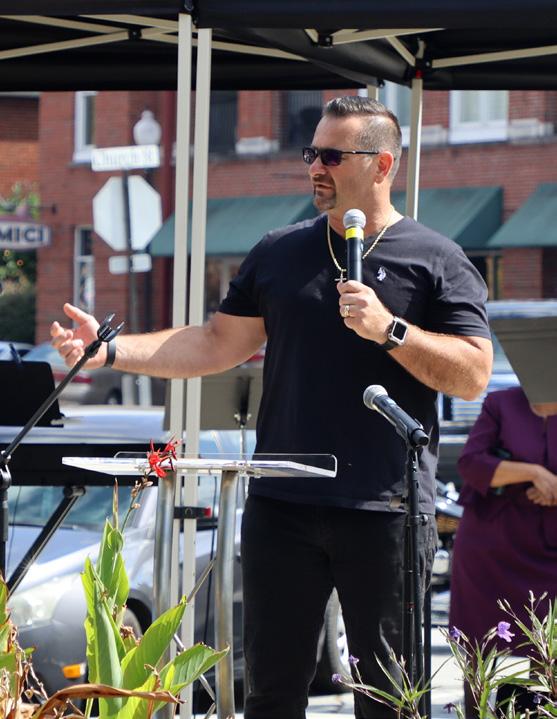
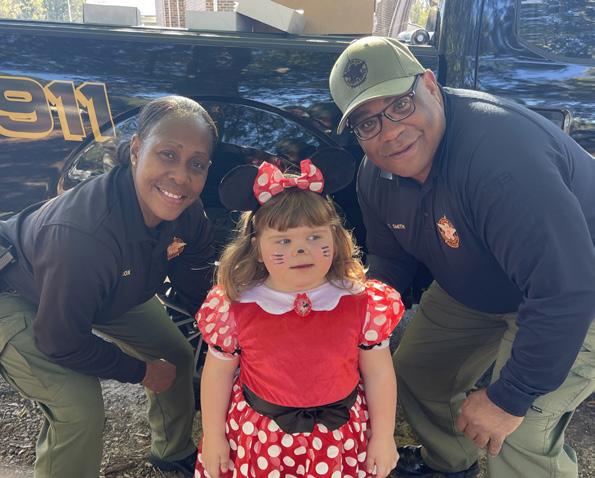
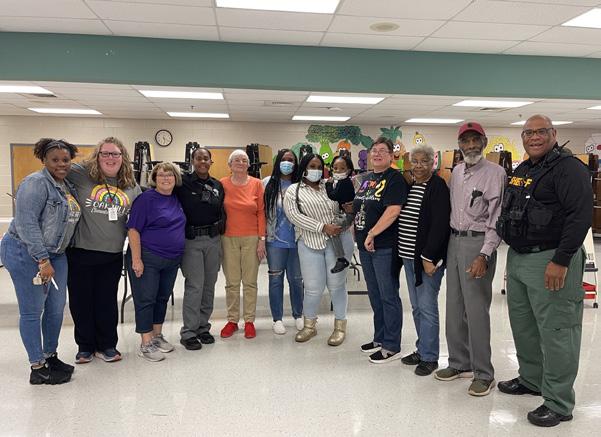
On October 21st,
On
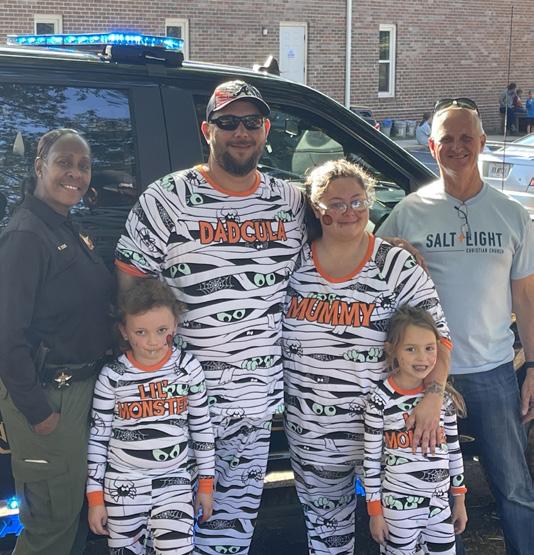
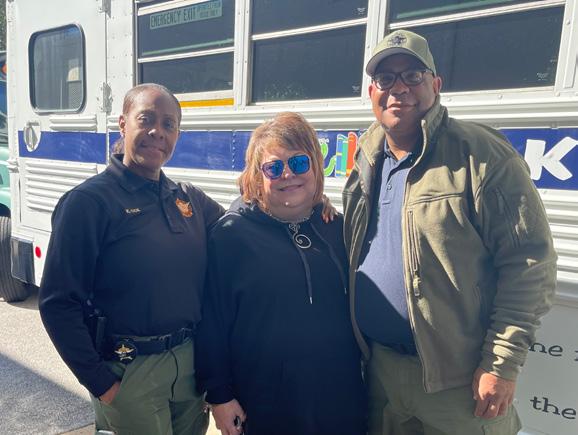
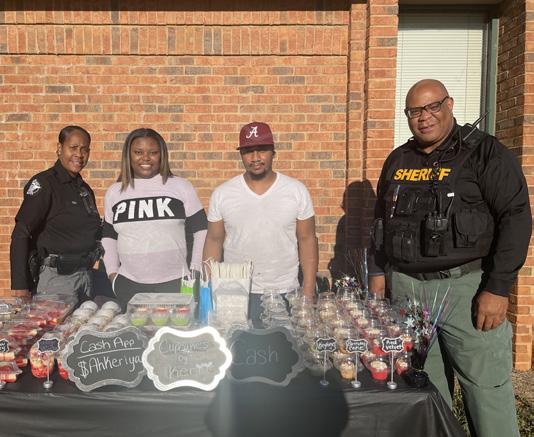
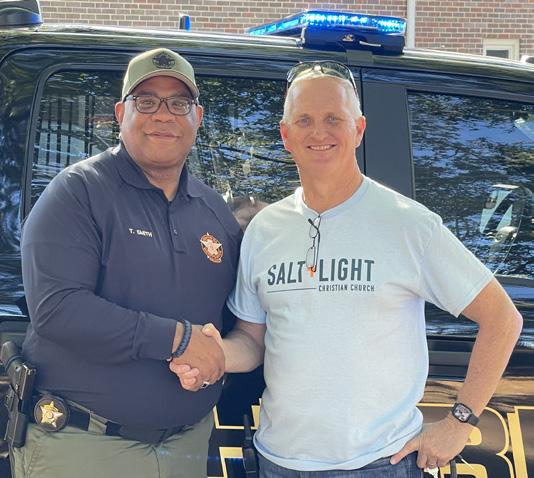
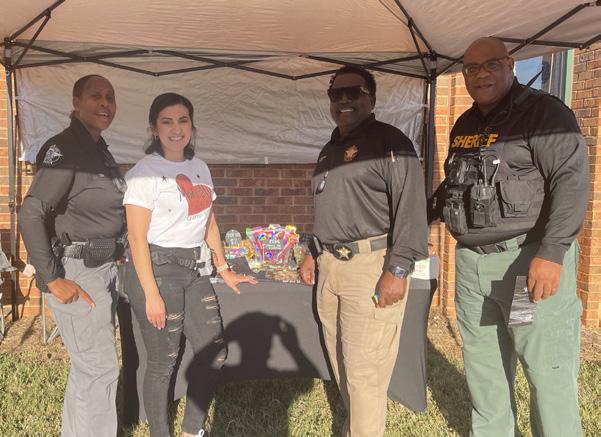
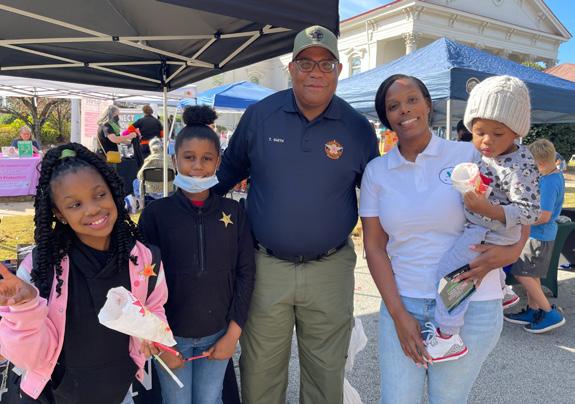

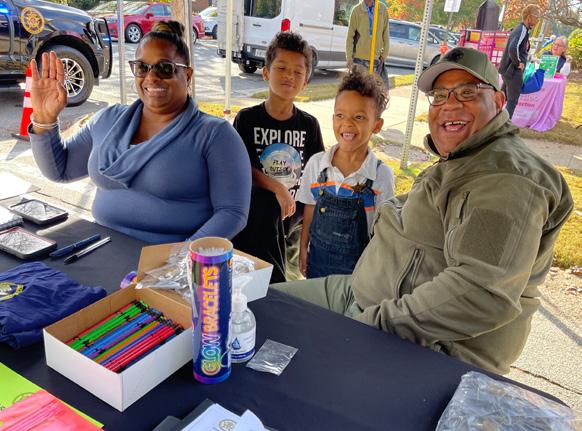

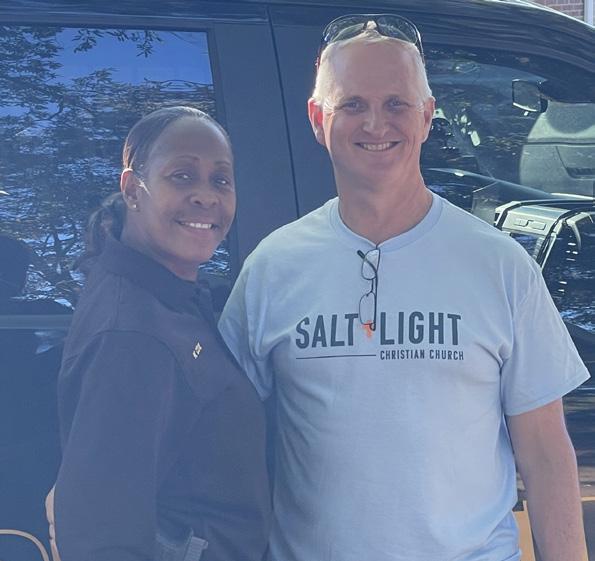
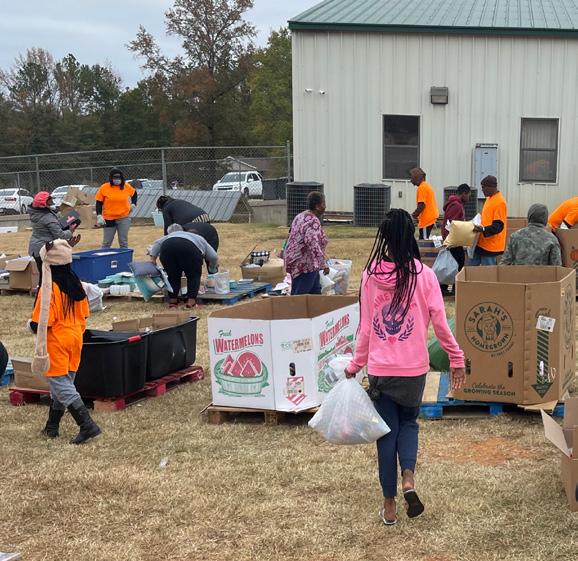
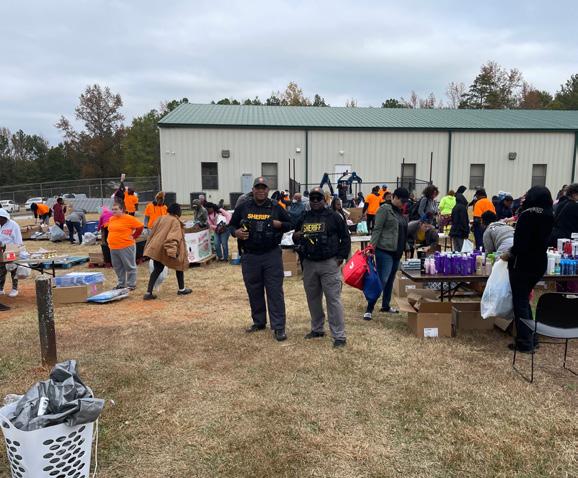

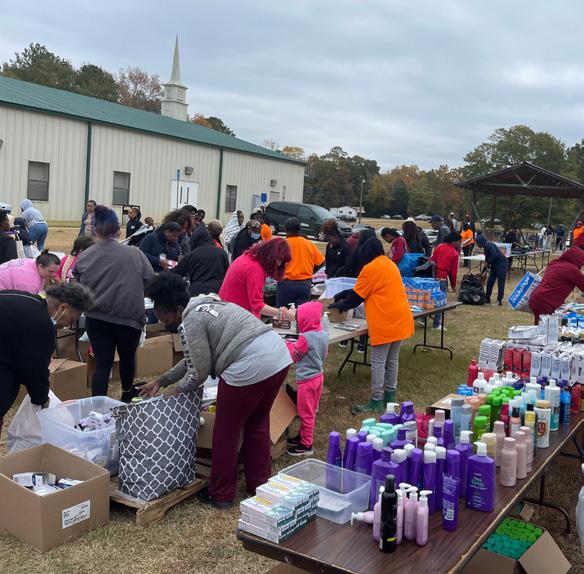
On October
On
Newton County Deputies Kimberly Cox, Michael Gregg, and Tim Smith participated in the annual Oak Hill Elementary School Fall Festival in Covington, Georgia. October 22nd, Newton County Deputies Kimberly Cox, Michael Gregg, and Tim Smith, along with Crys tal Albright, personnel coordinator, attended the annual Change The World Day at Covington First United Methodist Church in Covington, Georgia. 22nd, Newton County Deputies Kimberly Cox, Michael Gregg, and Tim Smith attended the Salt + Light Christian Church Fall Festival in Covington, Georgia. October 29th, Newton County Deputies Kimberly Cox, Michael Gregg, and Tim Smith attended the Faith of Jesus Ministries Community Give-Back in Covington, Georgia.

On October 31st, the Newton County Sheriff’s Office participated in the 2nd Annual Trick-or-Treat on the Trail at Legion Field in Covington, Georgia, hosted by the The Covington Family YMCA and the City of Covington.


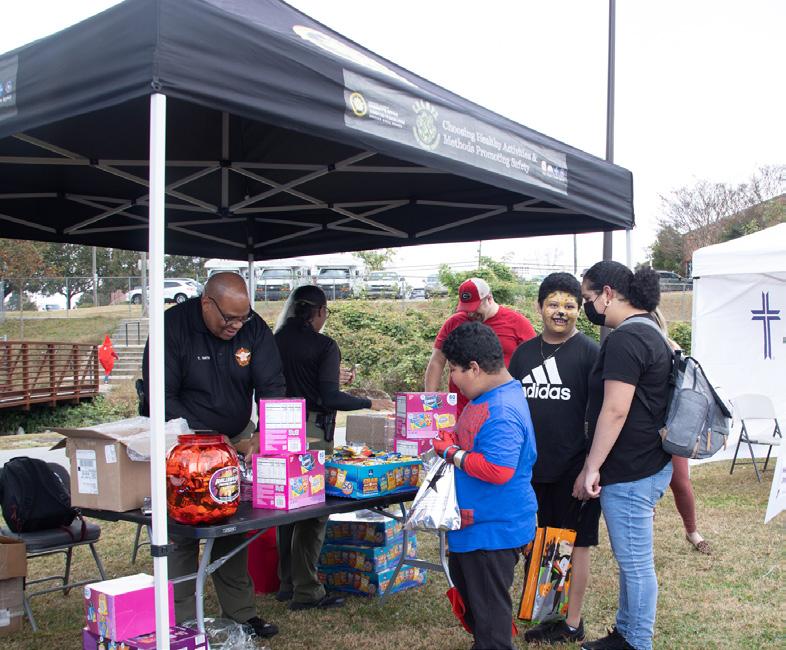



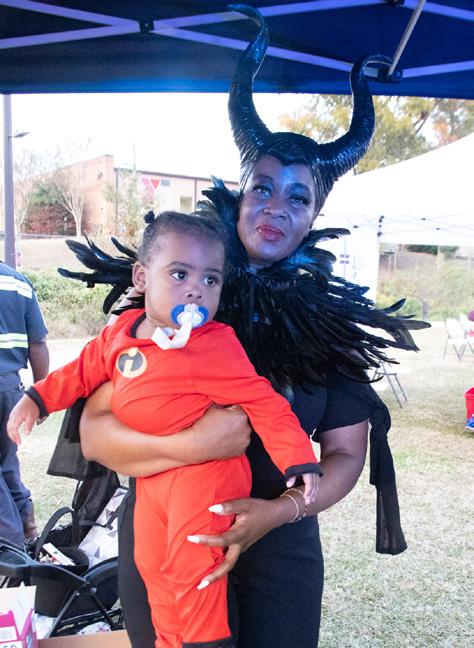
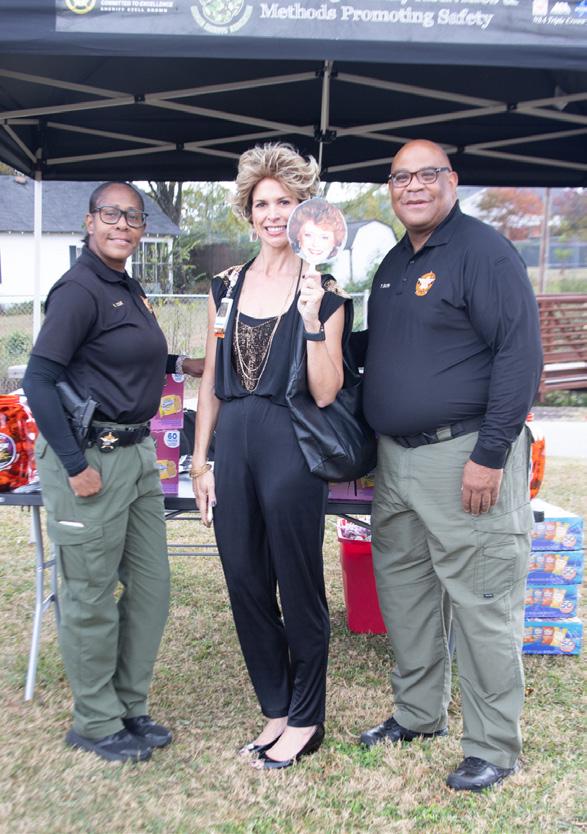
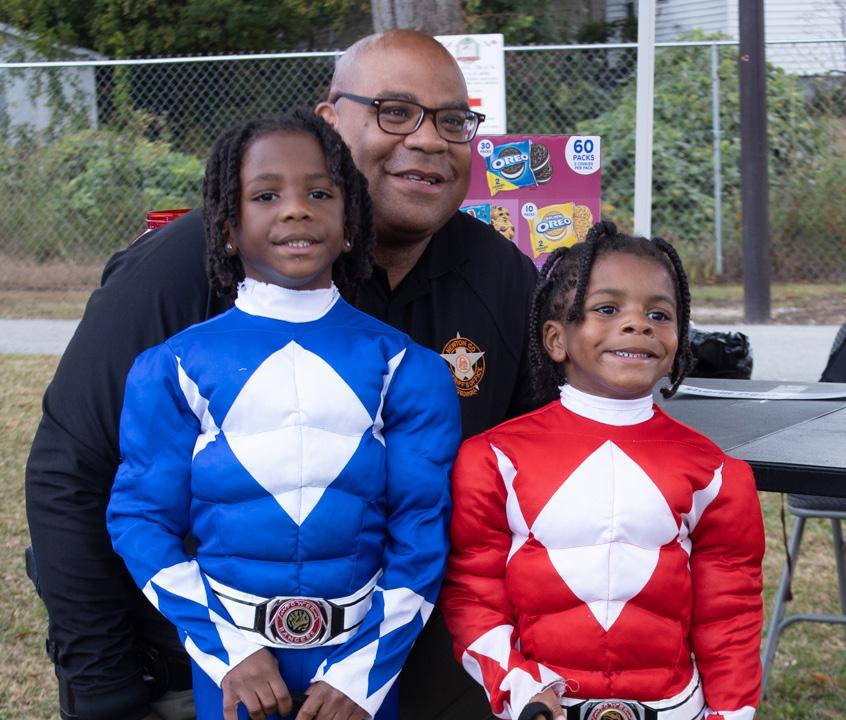
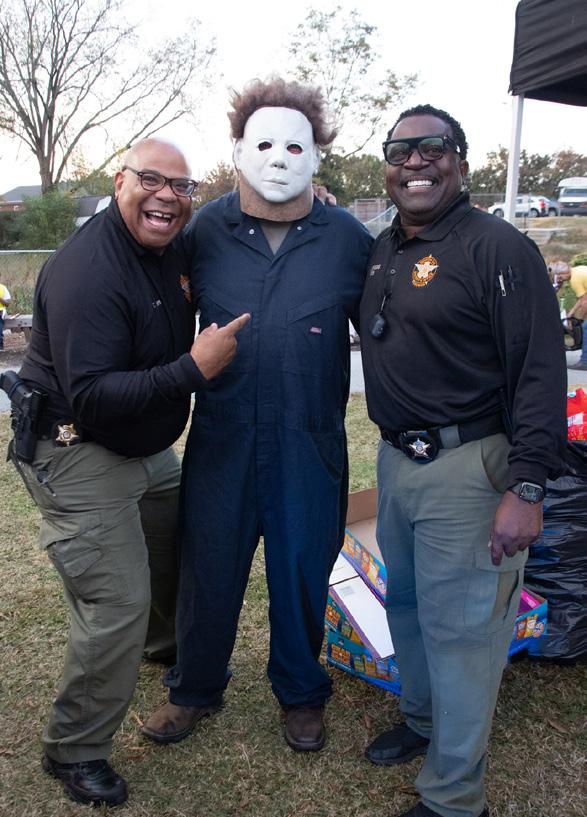

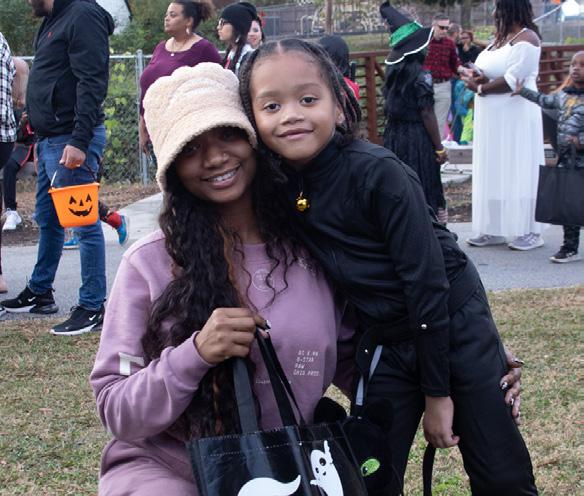

Families who attended this year’s Trick-or-Treat on the Trail enjoyed the various candy stations located on the field and on portions of Cricket Frog Trail, as well as Zombie Zumba and Halloween-themed music.
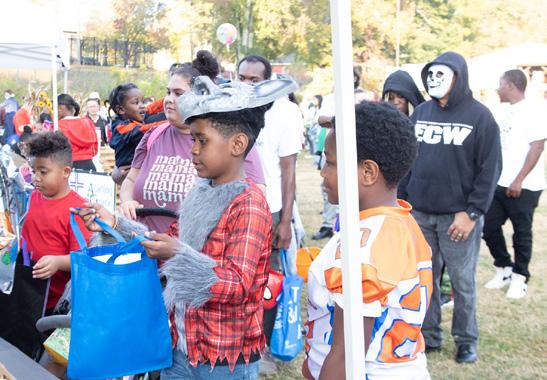
On October 31, 2022, the Newton County Sheriff’s Office, in conjunction with the Department of Community Super vision, hosted the 16th Annual Sex Offender Compliance Check for registered sex offenders residing in the Newton County area.
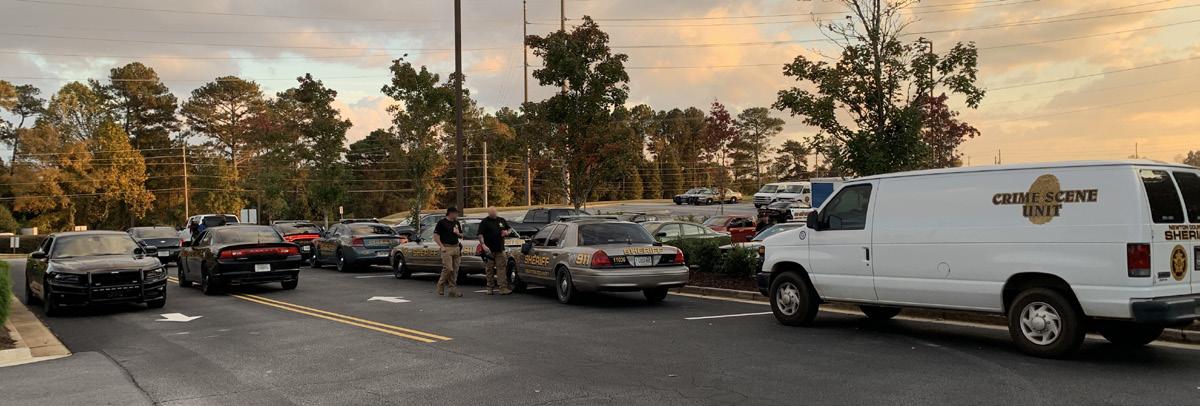

Deputy Veronica Williams, alongside probation and parole officers, hosted this annual event to ensure high-risk sex offenders are appropriately supervised while fami lies participate in Halloween festivities. The NCSO’s Sex Offender Compliance Check was initiated in 2006 and became part of the Georgia Sheriffs’ Association’s annual initiative, Operation Watchful Eye, in 2015.
This year, Operation Watchful Eye involved 66 Georgia Sheriffs, 10,232 registered sex offenders, 366 predators, and 329 homeless sex offenders. There was a total of 42 sex offenders arrested and 117 warrants issued across the state of Georgia from October 25th through November 1st.
In Newton County, there are currently 331 registered sex offenders. No arrests were made in the community during this year’s event; however, a total of 12 warrants were issued between October 24th and October 31st.
A current list of registered sex offenders can be accessed on the NCSO’s website at www.newtonsheriffga.org.
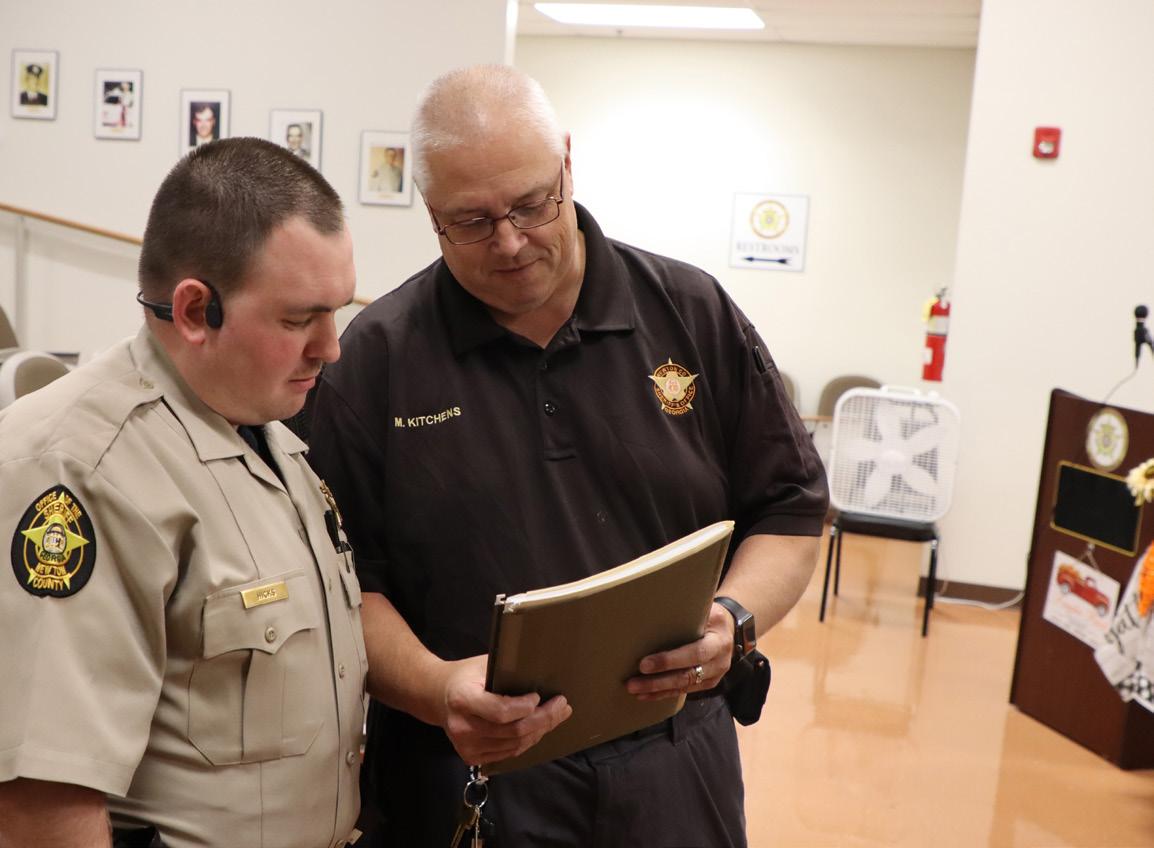
In August, Deputy Brandon Farmer complet ed the rigorous 160-hour Drug Recognition Expert (DRE) program through the Georgia Public Safety Training Center.
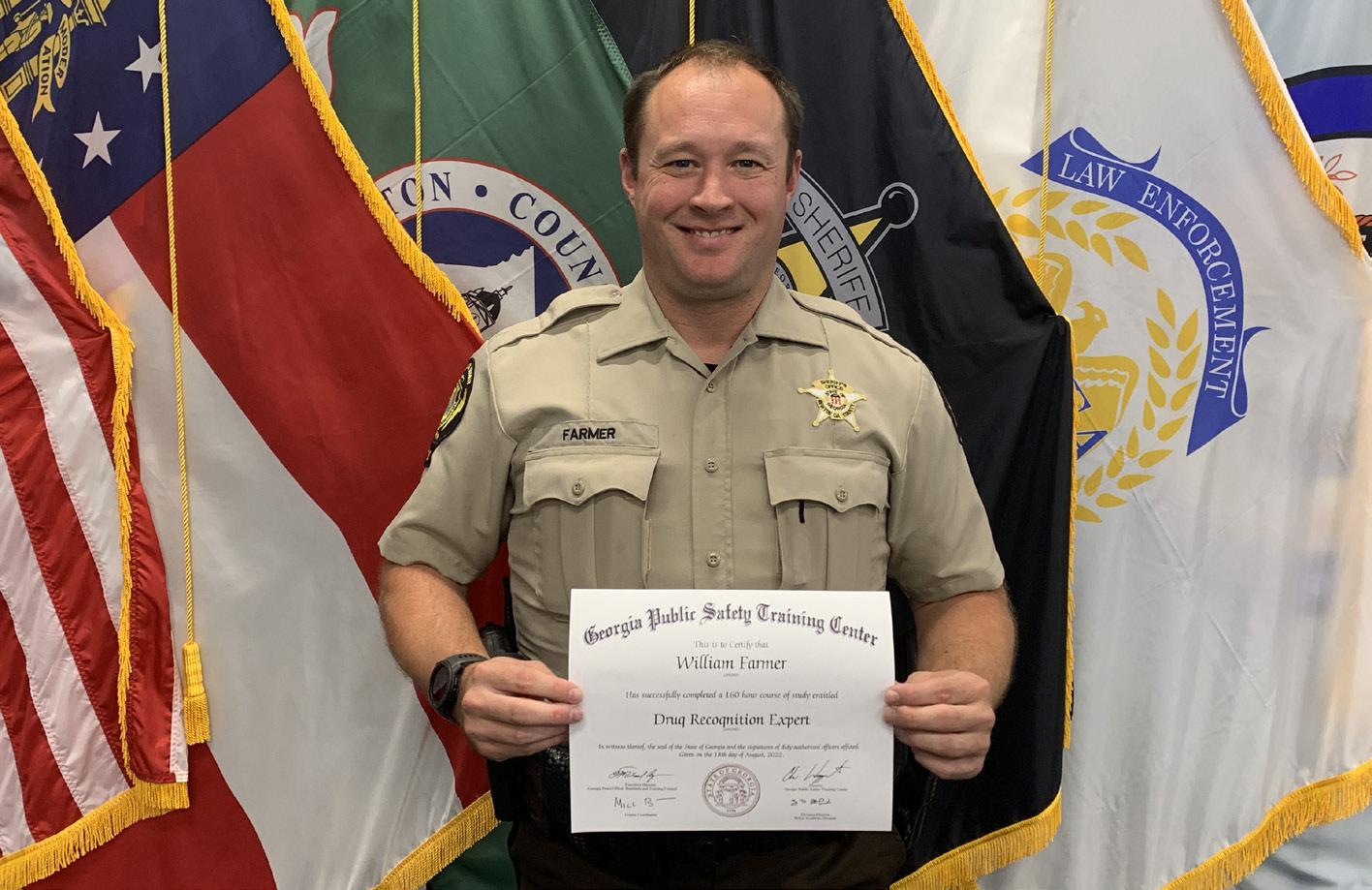
The DRE program is designed to keep com munities safer by removing impaired drivers from roadways. Officers who complete the program become proficient at identifying drugs and drug categories, as well as detect ing signs that impaired drivers display when under the influence of drugs.
Prior to completing the Drug Recognition Expert program, Deputy Farmer completed the 60-hour Law Enforcement Phlebotomy program.

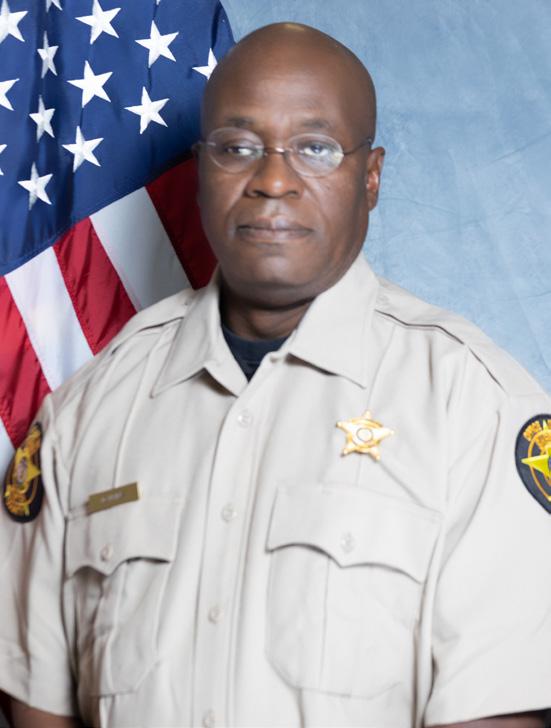
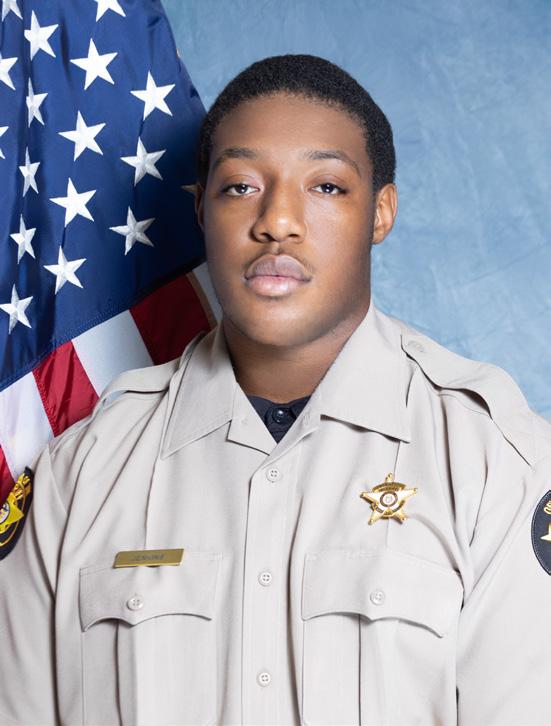
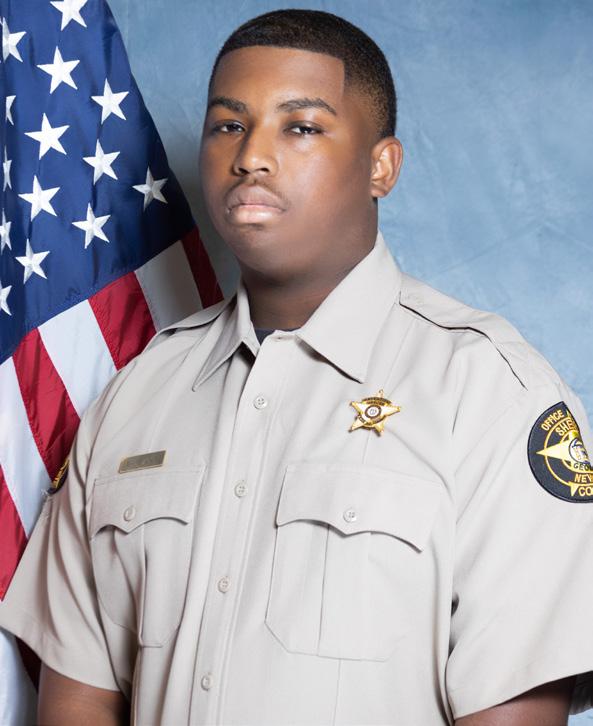
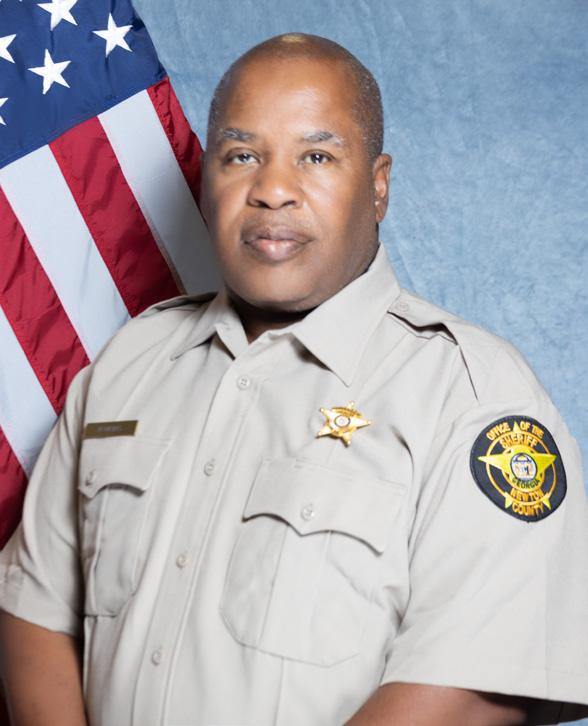
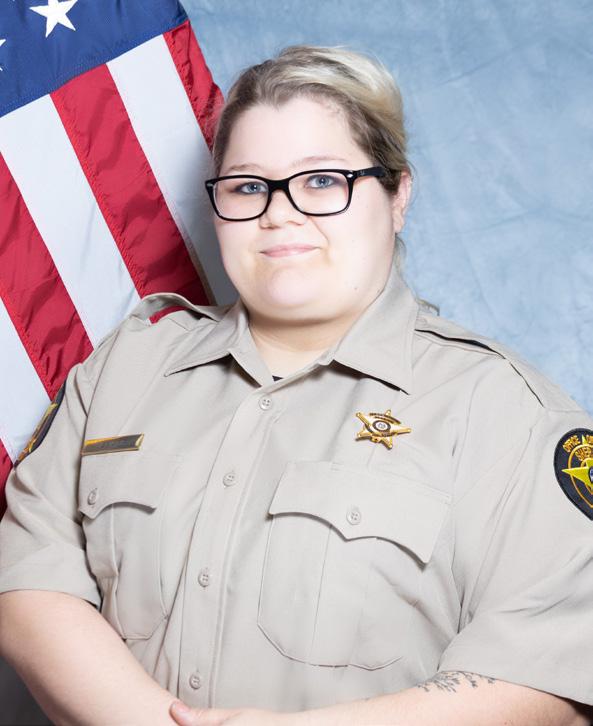 Sheriff Ezell Brown and the Newton County Sheriff’s Office welcome you!
Alannah Elliott Detention Officer
Duval Hill Detention Officer
Mario Jackson Detention Officer Murphy Chapman Detention Officer
Luc Eyma Deputy Sheriff, Recruit
Sheriff Ezell Brown and the Newton County Sheriff’s Office welcome you!
Alannah Elliott Detention Officer
Duval Hill Detention Officer
Mario Jackson Detention Officer Murphy Chapman Detention Officer
Luc Eyma Deputy Sheriff, Recruit

